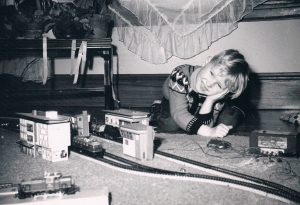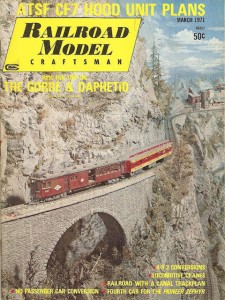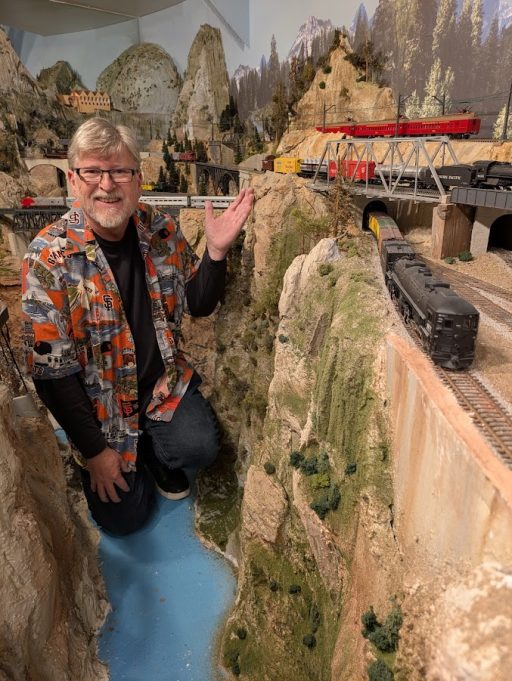Railroading in My Blood: My Path to the Redwoods and Pacific RR
I grew up with toy trains. My dad started his first layout when I was three, and by the time I had memories, trains were in my blood.

His early setups weren’t permanent, until we moved into a house with a basement. Then things got serious. He ran Märklin HO scale, a system built for automation. I’ll never forget the roar of eight trains running at once. The sound – tinplate wheels on tinplate track – was deafening, just like the Lionel layouts I’d later see.
I didn’t discover model railroading until I was around ten. The first railroad magazine I ever purchased was the March 1971 issue of Railroad Model Craftsman. I was 10 years old. The cover story? A fan trip on John Allen’s legendary Gorre & Daphetid.

I was blown away. His scenery was jaw-dropping. Mountains, cliffs, deep canyons. It made his layout feel massive, way bigger than any tabletop setup. That first impression stuck with me. It shaped my vision for the Redwoods and Pacific Railroad.
My railroad is a fictional line, loosely based on the Northwestern Pacific and Southern Pacific’s Santa Cruz Mountain line. I borrowed key ideas from John Allen, especially his floor-to-ceiling scenery. Not a copy, just using his tricks to make the layout feel bigger. And it works.

Another major influence? Malcolm Furlow’s San Juan Central. A project railroad first featured in Model Railroader, then published as a how-to book. Like Allen, Furlow built with drama in mind. His layouts were high-impact, full of rugged landscapes and tight spaces. My first version of the RPRR took cues from him, right down to the modular benchwork. I learned a ton from that build, and those lessons carried into the current version.
The RPRR is still a work in progress. And that’s by design. I tinker with it most nights… because tinkering is the point. There’s no finish date, no grand unveiling. Just me, working on it when the mood strikes. And I like it that way.
